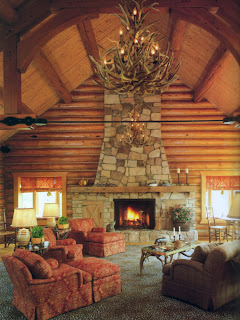Cecil has not always been closely related to men's clubs, but for this one he says he took a long look at 'men's clubland' and proceeded accordingly. Most of the colors are dark - the carpeting has a black pattern on deep reds, blue and browns - and the dining room walls are covered with dark velvet. There is a kind of informal bar, including such anachronism as letter racks, fly whisks and caviar sandwiches as a sort of free lunch, and even a dozen portraits - some of them Beaton's own - of beautiful women. He has no plans, he says, to hang Twiggy. 'Her features are lovely and so are her proportions (what's he say?),' he notes 'but she gets herself up to look like a mess.'
"As private clubs in New York go, the tariff is about par for the course. Five hundred initiation fee, annual dues of $350 - and, of course, the old standby of having a speaking acquaintance with at least two board members. The board roster is a gasser: Douglas Fairbanks Jr., Count Teo Rossi, George Plimpton, etc. The name Raffles, was not Beaton's original choice. He wanted to call it 'Dogs,' because it 'would have been such fun to say 'I'm going to the Dogs tonight.' "
Not what one would expect, but amusing, nonetheless, an image of Cecil Beaton up a ladder flinging down paint to create the design for the splattered, splotched carpet that covered the floor at Raffles. More expected, perhaps, is the idea of him and his aide Robert LaVine* touring Second Avenue in a limousine looking for antiques to decorate the club. Beaton, still in his My Fair Lady Edwardian manner, created an interior lit, or so it looks at this remove, with the glow from many a table-side flambé.
Other than noting my initial surprise that Beaton was the decorator of Raffles, I don't really want to add more to the already deep pool of blogger gush about him or his mildly repellant generation - Wallis Windsor, Beverly Nichols, et al.
I'd rather concentrate, instead, on Earl Blackwell, who as Chairman of the Board of Directors gave a party "... for Noel Coward at Raffles, which is full of photographs of celebrities. I removed every photograph in Raffles and replaced them with photographs of Noel taken through his entire career. It was a great thrill so see him go from picture to picture, some of them taken when he was very young, some of them with Alfred Lunt, Merle Oberon, Beatrice Lilly, Cary Grant and many more. They were all there."
"The party I enjoyed most, recently, was my first party in my Atlanta home. Ginger Rogers was in Atlanta for the first time so she was guest of honor. I invited forty of my friends in Atlanta for a seated dinner. I had five tables of eight and I named each one after a Ginger Rogers film. One table was 'Top Hat,' one was 'Flying Down to Rio,' etc. When my guests arrived, each was given a card with the name of his table. Then during the evening, Ginger moved from table to table, starting with 'Kitty Foyle.' "
Blackwell's twenty-feet-high ballroom, his party room, originally the solarium of the penthouse at the Briarcliffe apartments, was painted with Venetian-style murals in 1958 by William Hankinson - murals** that were damaged by water in succeeding years and then finally destroyed in a 1999 reconstruction when the building became a condominium. The room was recently redecorated by Mario Buatta.
Earl Blackwell, famously, did a lot of entertaining in the ballroom and in an interview said that his guests ".... leave the elevator, come into the entrance hall and immediately see a bar. That represents security for many people. And, you know, people don't like to walk into an enormous room until others are already there. If you have a little bar area where they can immediately go for a drink, several groups will gather then drift into the large room.
"No one likes to be the first guest to arrive but someone has to be the first, so you must offer the courageous early-comers confidence. I do think lots of effort should be made at the entrance in every way possible. I always have more flowers there, usually pink carnations or pink and red roses to give my guests a lift the moment they arrive. If they feel 'up' in the beginning, they can sustain that feeling throughout the entire evening."
William Hankinson's murals only lasted about forty years, and instead of restoring work that was a proud descendant of a tradition going back at the very least to Tiepolo, why anyone would sweep away such beauty and replace it with - and this is no slight against Mr Buatta - late-twentieth-century traditional decoration beats me.
Going to the Dogs, indeed.
Photographs of Earl Blackwell's ballroom and entrance hall by Max Eckert to accompany an interview by "The Editors" of Architectural Digest, September/October 1972.
Quotation from My New York written by columnist Mel Heimer for Reading Eagle, November 12, 1968. Source: Google here.
Photographs by Alexandre Georges to accompany uncredited text, from which I took notes, in Architectural Digest, September/October 1971.
* 1970 Tony Award© winner for Best Costume Design for Jimmy?
** Source here.




















































